 Search by Keyword
|
"MOTHER NATURE'S SON"
(John Lennon – Paul McCartney)
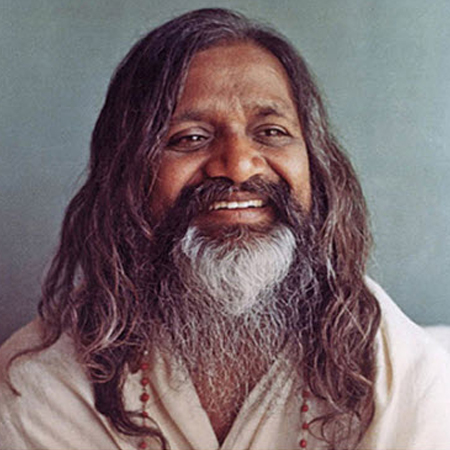 It is widely known that The Beatles' retreat to Rishikesh, India in the spring of 1968 was the catalyst to the majority of the songs heard on their groundbreaking double-album "The Beatles," aka the "White Album." You would think that the Maharishi, who was the group's instructor during this retreat to study Transcendental Meditation as well as the giver of many lectures, would be flattered to think that his spiritual insights would be thereby transmitted to the masses of the world's youth through the music of his pupils, The Beatles. It is widely known that The Beatles' retreat to Rishikesh, India in the spring of 1968 was the catalyst to the majority of the songs heard on their groundbreaking double-album "The Beatles," aka the "White Album." You would think that the Maharishi, who was the group's instructor during this retreat to study Transcendental Meditation as well as the giver of many lectures, would be flattered to think that his spiritual insights would be thereby transmitted to the masses of the world's youth through the music of his pupils, The Beatles.
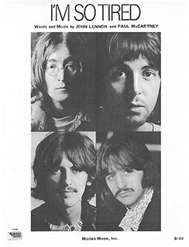 Even though their India experience did permeate the music featured on the “White Album,” it was mostly the mundane thoughts and experiences of the trip that wormed their way into the music, not spiritual insight. John's insomnia became “I'm So Tired,” Paul's observing some copulating monkeys turned into “Why Don't We Do It In The Road?,” fellow student Prudence Farrow's isolationist tendencies surfaced in “Dear Prudence,” and the realization that their spiritual leader wasn't all he was cracked up to be became “Sexy Sadie,” to name a few examples. Hardly an endorsement for true Spiritual Regeneration! Even though their India experience did permeate the music featured on the “White Album,” it was mostly the mundane thoughts and experiences of the trip that wormed their way into the music, not spiritual insight. John's insomnia became “I'm So Tired,” Paul's observing some copulating monkeys turned into “Why Don't We Do It In The Road?,” fellow student Prudence Farrow's isolationist tendencies surfaced in “Dear Prudence,” and the realization that their spiritual leader wasn't all he was cracked up to be became “Sexy Sadie,” to name a few examples. Hardly an endorsement for true Spiritual Regeneration!
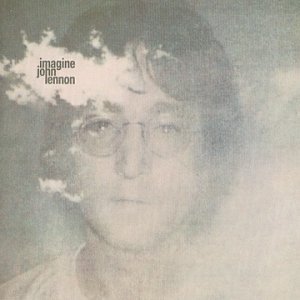 The Maharishi's spiritual message did get through in The Beatles' music in at least one song on the album, however. Inspired by a particular lecture from the guru concerning the unity of man and nature, Paul began writing “Mother Nature's Son” which displays an undiluted version of the sentiments expressed therein. John was also inspired by this lecture, which resulted in a similarly titled composition “Child Of Nature,” this song being dropped from consideration for the album sometime after they got back from India, either because of John's more recent disillusionment with the Maharishi or its similarities with Paul's song (this song evolving into “Jealous Guy” on John's 1971 album “Imagine”). In any case, at least they came back from their spiritual retreat with something spiritual! The Maharishi's spiritual message did get through in The Beatles' music in at least one song on the album, however. Inspired by a particular lecture from the guru concerning the unity of man and nature, Paul began writing “Mother Nature's Son” which displays an undiluted version of the sentiments expressed therein. John was also inspired by this lecture, which resulted in a similarly titled composition “Child Of Nature,” this song being dropped from consideration for the album sometime after they got back from India, either because of John's more recent disillusionment with the Maharishi or its similarities with Paul's song (this song evolving into “Jealous Guy” on John's 1971 album “Imagine”). In any case, at least they came back from their spiritual retreat with something spiritual!
Songwriting History
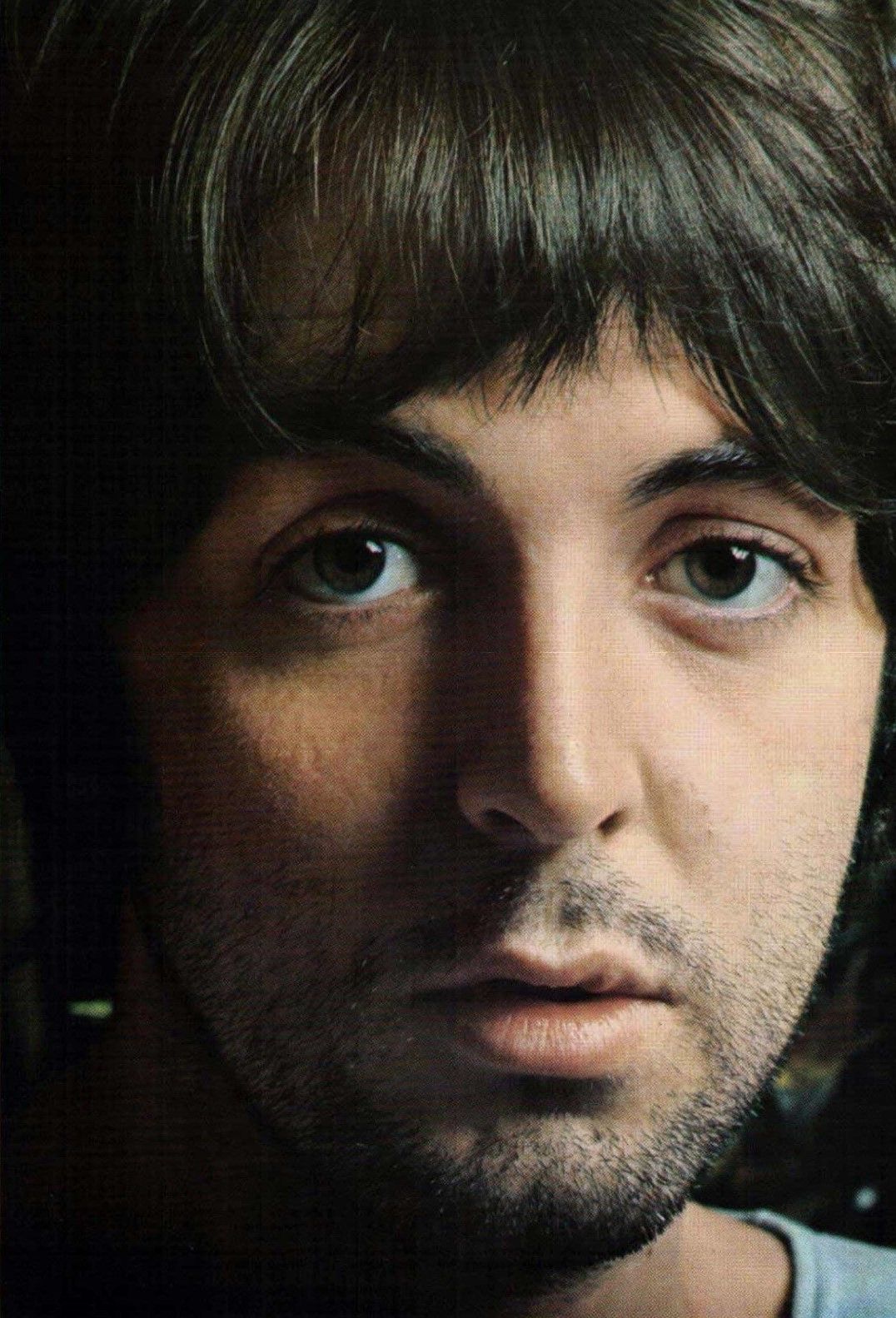 "I was always able to take my bike and, in five minutes, I'd be in quite deep countryside," Paul recalls about his childhood in his book "Many Years From Now." "This is where my love of the country came from...I can remember the Dam woods, which had millions of rhododendron bushes. I've never seen that many rhododendron bushes since. We used to have dens in the middle of them because they would get quite bare in the middle so you could squeeze in...This is what I was writing about in 'Mother Nature's Son.' It was basically a heartfelt song about my child-of-nature leanings." "I was always able to take my bike and, in five minutes, I'd be in quite deep countryside," Paul recalls about his childhood in his book "Many Years From Now." "This is where my love of the country came from...I can remember the Dam woods, which had millions of rhododendron bushes. I've never seen that many rhododendron bushes since. We used to have dens in the middle of them because they would get quite bare in the middle so you could squeeze in...This is what I was writing about in 'Mother Nature's Son.' It was basically a heartfelt song about my child-of-nature leanings."
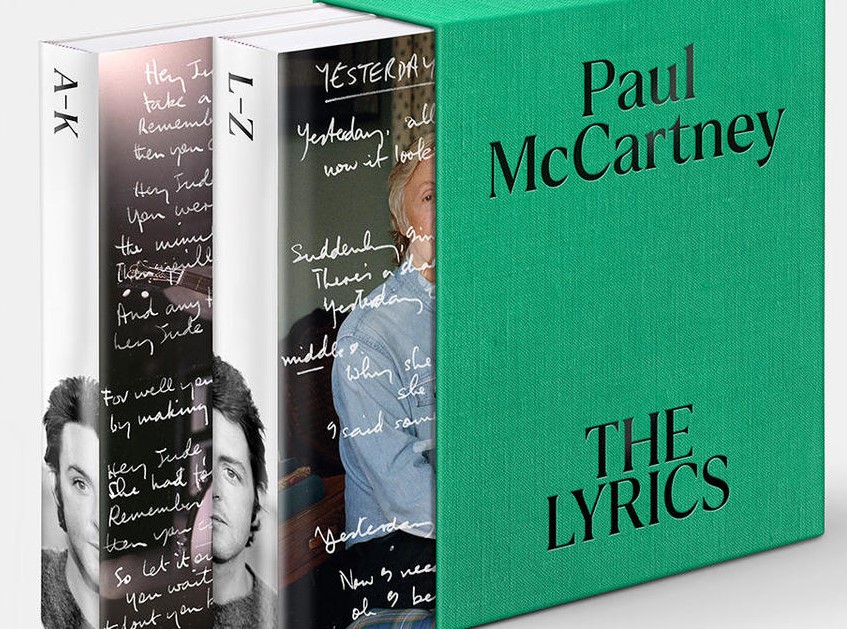 In his book "The Lyrics," Paul elaborated further: "We moved into a new house at 12 Ardwick Road in the area called Speke, just ten minutes by bike down the road, or five minutes by bus...If you went about a mile from where we lived, you would suddenly be in rural Lancashire, and it was as if you'd fallen off the end of the Earth. This was all woods and streams and fields of golden corn waving - everything you can love about the countryside. There was a lot of bird life there 'cause, in those days, things were more or less organic. They just had not quite got around to buying expensive persticides and fertilizers, so nature was more in balance. That's something I would often do - just go walking, either into the woods or to dam up a stream or to climb a tree or to wander into the fields and get chased by farmers. Even now, as I walk through my own fields, or ride through them on my horse, I often think of those farmers: 'Get out of here! You're ruining my field!'" In his book "The Lyrics," Paul elaborated further: "We moved into a new house at 12 Ardwick Road in the area called Speke, just ten minutes by bike down the road, or five minutes by bus...If you went about a mile from where we lived, you would suddenly be in rural Lancashire, and it was as if you'd fallen off the end of the Earth. This was all woods and streams and fields of golden corn waving - everything you can love about the countryside. There was a lot of bird life there 'cause, in those days, things were more or less organic. They just had not quite got around to buying expensive persticides and fertilizers, so nature was more in balance. That's something I would often do - just go walking, either into the woods or to dam up a stream or to climb a tree or to wander into the fields and get chased by farmers. Even now, as I walk through my own fields, or ride through them on my horse, I often think of those farmers: 'Get out of here! You're ruining my field!'"
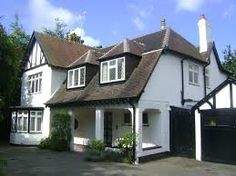 In 1968, around the time of the release of the "White Album," Paul elaborated in more detail about the inspiration for this track: “'Mother Nature's Son' was inspired by a lecture on nature given by the Maharishi, but (the song) was mostly written in Liverpool when we got back...It states, 'Born a poor young country boy,' and I was born in a Woolton Hospital, actually – so it's a dirty lie!” In his book “Many Years From Now,” he concurs: “I seem to remember writing 'Mother Nature's Son' at my dad's house in Liverpool. I often used to do that if I'd gone up to see him. Visiting my family I'd feel in a good mood, so it was often a good occasion to write songs. So this was me doing my mother nature's son bit.” A notebook that Paul kept from his songwriting attempts while in India, which he labeled "Spring Songs Rishikesh 1968," contains the first two verses of the song, this song labeled as song #3 of the compositions written during this Rishikesh visit (as viewed above). The the third verse, which begins "Find me in my field of grass," appears to have been written at Rembrandt, the five-bedroom house Paul bought for his father in Heswall, Cheshire about 15 miles from Liverpool. In 1968, around the time of the release of the "White Album," Paul elaborated in more detail about the inspiration for this track: “'Mother Nature's Son' was inspired by a lecture on nature given by the Maharishi, but (the song) was mostly written in Liverpool when we got back...It states, 'Born a poor young country boy,' and I was born in a Woolton Hospital, actually – so it's a dirty lie!” In his book “Many Years From Now,” he concurs: “I seem to remember writing 'Mother Nature's Son' at my dad's house in Liverpool. I often used to do that if I'd gone up to see him. Visiting my family I'd feel in a good mood, so it was often a good occasion to write songs. So this was me doing my mother nature's son bit.” A notebook that Paul kept from his songwriting attempts while in India, which he labeled "Spring Songs Rishikesh 1968," contains the first two verses of the song, this song labeled as song #3 of the compositions written during this Rishikesh visit (as viewed above). The the third verse, which begins "Find me in my field of grass," appears to have been written at Rembrandt, the five-bedroom house Paul bought for his father in Heswall, Cheshire about 15 miles from Liverpool.
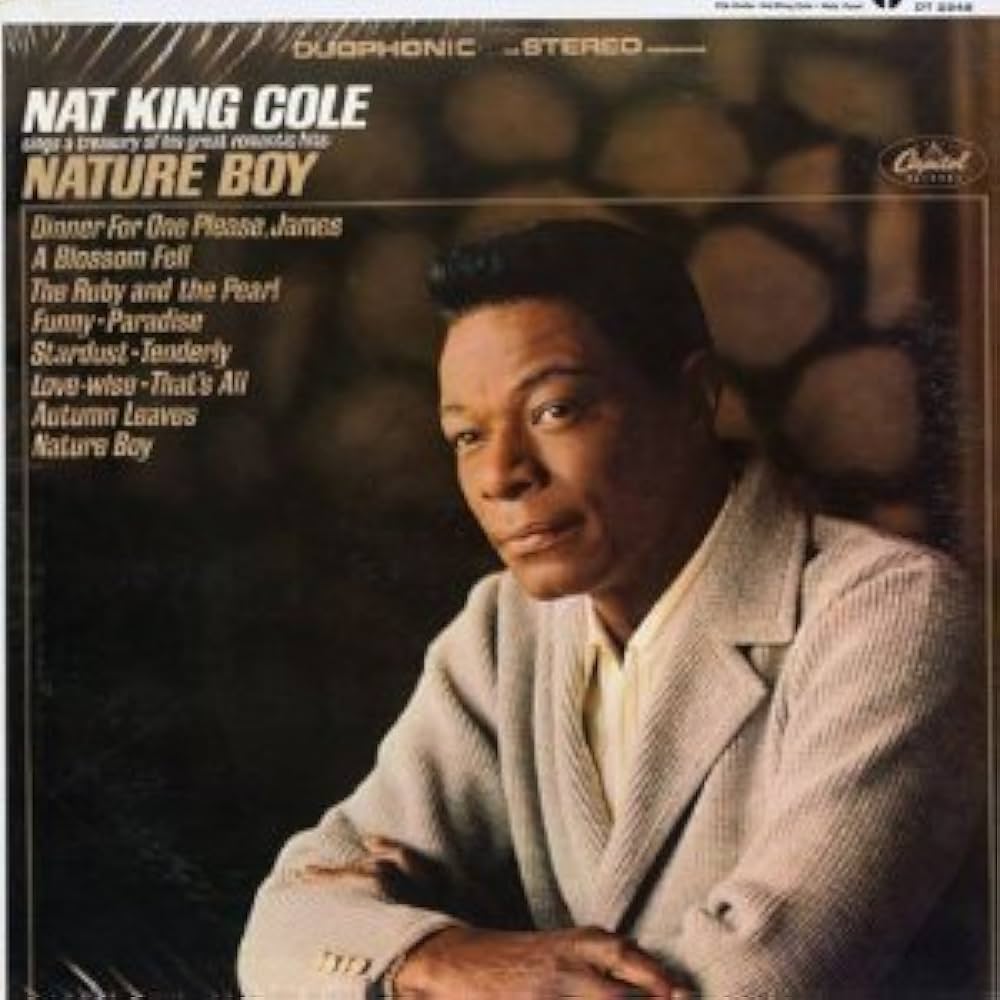 McCartney also related that there was yet another inspiration for this song, a famous recording by Nat King Cole originally released in 1948 that he became familiar with as a child. “I have always loved the song called 'Nature Boy'; 'There was a boy, a very strange and gentle boy...' He loves nature, and 'Mother Nature's Son' was inspired by that song. I had always loved nature, and when Linda and I got together we'd discovered we had this deep love of nature in common." In his book "The Lyrics," Paul continued: "There was that strong sense of the countryside, and I was very lucky to access it so easily...this sheer glory of nature. I was living in London and imagining it, trying to think like a country boy. Mother Nature's son." McCartney also related that there was yet another inspiration for this song, a famous recording by Nat King Cole originally released in 1948 that he became familiar with as a child. “I have always loved the song called 'Nature Boy'; 'There was a boy, a very strange and gentle boy...' He loves nature, and 'Mother Nature's Son' was inspired by that song. I had always loved nature, and when Linda and I got together we'd discovered we had this deep love of nature in common." In his book "The Lyrics," Paul continued: "There was that strong sense of the countryside, and I was very lucky to access it so easily...this sheer glory of nature. I was living in London and imagining it, trying to think like a country boy. Mother Nature's son."
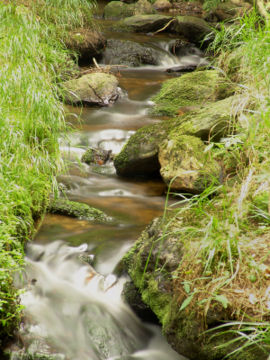 Concerning the lyrics, Paul explained: "'Sit beside a mountain stream' - which it would not have been; it would have been a field stream or a woodland stream. 'See her waters rise / Listen to the pretty sound of music as she flies.' I was very fascinated by streams, and I still am. I just like to see them burrowing their way to the sea, or wherever it is they go. 'My field of grass' was a definite nod to marijuana, because at that time we were all smoking pot and, as you may recall, I've always enjoyed sticking in any little reference to that. I just incorporated those phrases because I liked having a little in-joke...I was in my folk-singing 'California' mindset, but the actual terrain was Speke or, later on, Scotland. 'Swaying daisies,' buttercups - it was memories of summer in the beautiful fields. This was a love song...to the natural world." Concerning the lyrics, Paul explained: "'Sit beside a mountain stream' - which it would not have been; it would have been a field stream or a woodland stream. 'See her waters rise / Listen to the pretty sound of music as she flies.' I was very fascinated by streams, and I still am. I just like to see them burrowing their way to the sea, or wherever it is they go. 'My field of grass' was a definite nod to marijuana, because at that time we were all smoking pot and, as you may recall, I've always enjoyed sticking in any little reference to that. I just incorporated those phrases because I liked having a little in-joke...I was in my folk-singing 'California' mindset, but the actual terrain was Speke or, later on, Scotland. 'Swaying daisies,' buttercups - it was memories of summer in the beautiful fields. This was a love song...to the natural world."
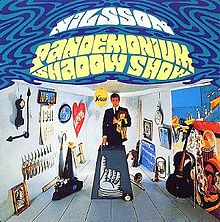 Musically, the song was composed in the key of D major and revolves around moving the D chord shape up the neck of the guitar. Paul chose not to write lyrics for the twice repeated refrain, opting instead to vocalize a melody line with "doo, doo doo," some writers speculating that Paul was attempting to impersonate various instruments as Harry Nilsson did on his album "Pandemonium Shadow Show," this being a favorite of his at the time. Musically, the song was composed in the key of D major and revolves around moving the D chord shape up the neck of the guitar. Paul chose not to write lyrics for the twice repeated refrain, opting instead to vocalize a melody line with "doo, doo doo," some writers speculating that Paul was attempting to impersonate various instruments as Harry Nilsson did on his album "Pandemonium Shadow Show," this being a favorite of his at the time.
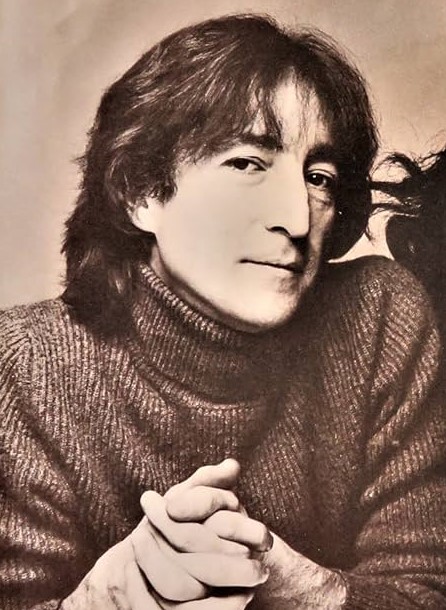 Lennon claimed in 1980 that the song was entirely written by Paul, but McCartney suggested otherwise. “There might have been a little help from John with some of the verses.” Be that as it may, this song was written sometime between the period of late February 1968, when Maharishi's lecture undoubtedly happened in India, and May 29th of the same year when Paul's demo of the song was recorded. Lennon claimed in 1980 that the song was entirely written by Paul, but McCartney suggested otherwise. “There might have been a little help from John with some of the verses.” Be that as it may, this song was written sometime between the period of late February 1968, when Maharishi's lecture undoubtedly happened in India, and May 29th of the same year when Paul's demo of the song was recorded.
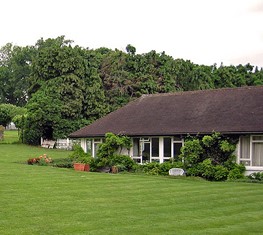
"Kinfauns," former home of George and Pattie Harrison
Recording History
As stated above, Paul recorded his demo of "Mother Nature's Son" on May 29th, 1968 at "Kinfauns," George's home in Esher, Surrey. The Beatles met on this and the previous day to make demo recordings of songs they would be officially recording in EMI Studios for their next album. This extensive group of demos was recorded on George's Ampex four-track machine, the results of which were eventually released on the Super Deluxe 50th Anniversary release of the "White Album" in 2018.
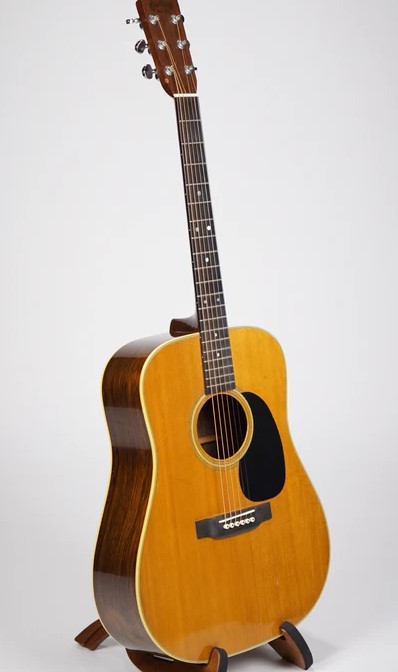 This charming demo features Paul double-tracked on acoustic guitar as well as double-tracked vocals, harmonizing with himself quite effectively during later moments of the song, although this idea was dropped for the official recording two-and-a-half months later. Light tapping is also heard on the recording, this percussive element undoubtedly produced courtesy of the back of an acoustic guitar. The lyrics and structure of the song were complete at this stage, the intro and conclusion not being finalized until it was brought into the studio This charming demo features Paul double-tracked on acoustic guitar as well as double-tracked vocals, harmonizing with himself quite effectively during later moments of the song, although this idea was dropped for the official recording two-and-a-half months later. Light tapping is also heard on the recording, this percussive element undoubtedly produced courtesy of the back of an acoustic guitar. The lyrics and structure of the song were complete at this stage, the intro and conclusion not being finalized until it was brought into the studio
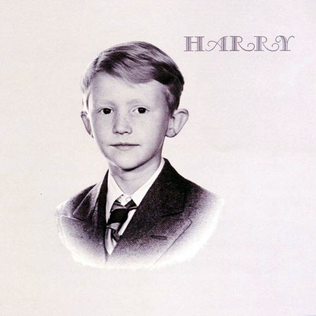 Paul first debuted "Mother Nature's Son" in EMI Studio Two as a rehearsal only on June 11th, 1968, during the recording of the similar sounding track "Blackbird." John was present in the studio on this day for a little while before he surmised that he wasn't needed at this session. When he heard that Studio Three was available, John went there to work on his track "Revolution 9." However, before he left, he was in the control room with George Martin and brought forward a suggestion for "Blackbird." Over the talkback microphone John suggested: "A little bit of brass band, you know. A very nice little bit of brass band." Paul then replied, "Yes, that would be lovely." John then adding, "A little bit of Nilsson's brass band," Harry Nilsson also being John's newly found favorite artist at the time. Paul immediately switched to running through "Mother Nature's Son" on guitar, remarking, "that would be nice with a brass band...like four...cornet, euphonum...little." Interestingly, Harry Nilsson recorded a version of "Mother Nature's Son" for his 1969 album "Harry" utilizing strings instead of brass, while his version of "She's Leaving Home," on his "Pandemonium Shadow Show" album, featured brass musicians instead of strings like the "Sgt. Pepper" album had. Paul first debuted "Mother Nature's Son" in EMI Studio Two as a rehearsal only on June 11th, 1968, during the recording of the similar sounding track "Blackbird." John was present in the studio on this day for a little while before he surmised that he wasn't needed at this session. When he heard that Studio Three was available, John went there to work on his track "Revolution 9." However, before he left, he was in the control room with George Martin and brought forward a suggestion for "Blackbird." Over the talkback microphone John suggested: "A little bit of brass band, you know. A very nice little bit of brass band." Paul then replied, "Yes, that would be lovely." John then adding, "A little bit of Nilsson's brass band," Harry Nilsson also being John's newly found favorite artist at the time. Paul immediately switched to running through "Mother Nature's Son" on guitar, remarking, "that would be nice with a brass band...like four...cornet, euphonum...little." Interestingly, Harry Nilsson recorded a version of "Mother Nature's Son" for his 1969 album "Harry" utilizing strings instead of brass, while his version of "She's Leaving Home," on his "Pandemonium Shadow Show" album, featured brass musicians instead of strings like the "Sgt. Pepper" album had.
 The day Paul brought “Mother Nature's Son” into the studio for official recording was August 9th, 1968. The session began around 7:30 pm in EMI Studio Two, the first order of business being further work on George's track “Not Guilty,” a song which went through extensive work but was later dropped from the album's line up. This session was due to end at 10 pm but, after the other Beatles left, Paul walked in. The day Paul brought “Mother Nature's Son” into the studio for official recording was August 9th, 1968. The session began around 7:30 pm in EMI Studio Two, the first order of business being further work on George's track “Not Guilty,” a song which went through extensive work but was later dropped from the album's line up. This session was due to end at 10 pm but, after the other Beatles left, Paul walked in.
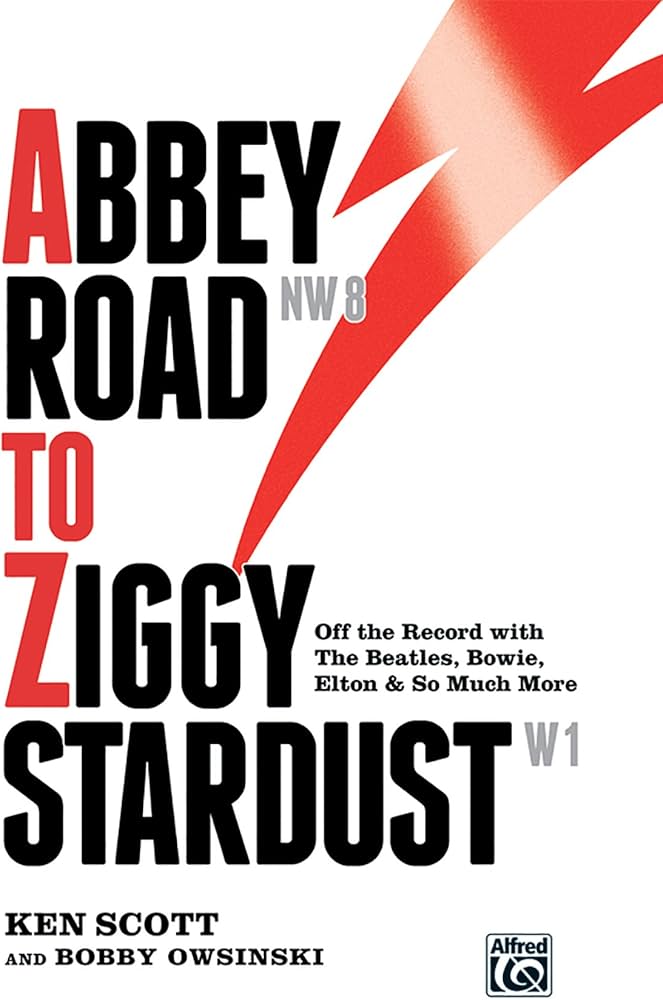 "It was going to be a fairly early night by normal standards," stated in 2nd engineer John Smith in Ken Scott's book "Abbey Road To Ziggy Stardust." "On this particular session we were finished by midnight, so both Ken (Smith) and I were looking forward to getting home early. Suddenly Paul walked in completely out of the blue, since we weren't expecting him. We had packed things up pretty much, as the floor was clear of mics. He asked if we'd mind if he could put down a track. What are you going to do? It was Paul McCartney. He promised it wouldn't take long. He sat down with an acoustic guitar and started singing, and before we knew what happened it was 7 or 8 in the morning. How are you going to walk away from a song like that? It was just so magical and spellbinding. It was really neat just the three of us working together, as apposed to the band, which had its own kind of atmosphere. It was a very intimate working relationship."stuck around to start work on “Mother Nature's Son” with just himself on acoustic guitar and vocals, this extending the session to 2 am the following morning. "It was going to be a fairly early night by normal standards," stated in 2nd engineer John Smith in Ken Scott's book "Abbey Road To Ziggy Stardust." "On this particular session we were finished by midnight, so both Ken (Smith) and I were looking forward to getting home early. Suddenly Paul walked in completely out of the blue, since we weren't expecting him. We had packed things up pretty much, as the floor was clear of mics. He asked if we'd mind if he could put down a track. What are you going to do? It was Paul McCartney. He promised it wouldn't take long. He sat down with an acoustic guitar and started singing, and before we knew what happened it was 7 or 8 in the morning. How are you going to walk away from a song like that? It was just so magical and spellbinding. It was really neat just the three of us working together, as apposed to the band, which had its own kind of atmosphere. It was a very intimate working relationship."stuck around to start work on “Mother Nature's Son” with just himself on acoustic guitar and vocals, this extending the session to 2 am the following morning.
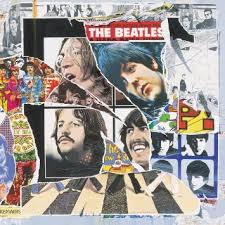 Paul plowed through 25 takes of the song with just live acoustic guitar on track one and vocals on track four of the four-track tape. The majority of the takes were complete and could have been used as a basis for the completed song, but Paul was experimenting with subtle ideas throughout the takes, hoping to stumble upon something that worked best. For instance, the instrumental guitar introduction in some of the early takes was twice the length of what he ended up with on the finished recording. "Take one" broke down at some point, but the complete "take two" is featured on the compilation album “Anthology 3,” which begins with Paul's request to the engineering team concerning a vocal effect that was coming through his headphones: “Can you take this thing off my voice; I've got like this speaker...I can hear. Uh, thank you...OK, leave it on, then. Good.” The conclusion of the song on this take was an adlib idea he quickly dropped, which changed the tempo and time signature for the final few measures. After the take was finished, he stated: “Next item on this evening's agenda, I'd like to give you my version of 'London Derriere!'" "Take three" broke down just after the lyric "I'm sitting, singing songs for everyone," which Paul followed with "...and this is one of them!" Paul plowed through 25 takes of the song with just live acoustic guitar on track one and vocals on track four of the four-track tape. The majority of the takes were complete and could have been used as a basis for the completed song, but Paul was experimenting with subtle ideas throughout the takes, hoping to stumble upon something that worked best. For instance, the instrumental guitar introduction in some of the early takes was twice the length of what he ended up with on the finished recording. "Take one" broke down at some point, but the complete "take two" is featured on the compilation album “Anthology 3,” which begins with Paul's request to the engineering team concerning a vocal effect that was coming through his headphones: “Can you take this thing off my voice; I've got like this speaker...I can hear. Uh, thank you...OK, leave it on, then. Good.” The conclusion of the song on this take was an adlib idea he quickly dropped, which changed the tempo and time signature for the final few measures. After the take was finished, he stated: “Next item on this evening's agenda, I'd like to give you my version of 'London Derriere!'" "Take three" broke down just after the lyric "I'm sitting, singing songs for everyone," which Paul followed with "...and this is one of them!"
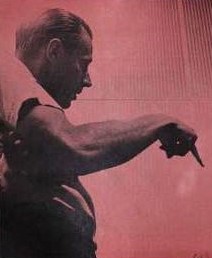 The Super Deluxe "White Album" box set includes the complete "take 15," which displays Paul experimenting with various vocal inflections. On the final verse that follows the second refrain, Paul here decides to vocally repeat the first verse which quickly concludes, followed by Paul stating, "I beg your pardon." The following interchange between Paul and George Martin from the control room is then caught on tape. Paul: "What's been happening so far, Mr. Martin?" George: "You've done one or two nice ones, um, you've done a lot of others where you've f*cked up, you know." Paul: "Is there no one listening up there, by any slight chance?" George: "Yeah, we're listening all the time!" George (now realizing the comunication problem): "Sorry, I'm, I'm, I'm pushing the wrong button." Paul: "Oh. What's happening?" George: "I thought we'd run into...a couple of nice ones, um." Paul: "Have you remembered which is which?" George: "When you think you're absolutely a breakdown, then breakdown." Paul: "Right, yeah, ok." George: "It's sometimes worth it." Paul: "Yeah right, ok." The Super Deluxe "White Album" box set includes the complete "take 15," which displays Paul experimenting with various vocal inflections. On the final verse that follows the second refrain, Paul here decides to vocally repeat the first verse which quickly concludes, followed by Paul stating, "I beg your pardon." The following interchange between Paul and George Martin from the control room is then caught on tape. Paul: "What's been happening so far, Mr. Martin?" George: "You've done one or two nice ones, um, you've done a lot of others where you've f*cked up, you know." Paul: "Is there no one listening up there, by any slight chance?" George: "Yeah, we're listening all the time!" George (now realizing the comunication problem): "Sorry, I'm, I'm, I'm pushing the wrong button." Paul: "Oh. What's happening?" George: "I thought we'd run into...a couple of nice ones, um." Paul: "Have you remembered which is which?" George: "When you think you're absolutely a breakdown, then breakdown." Paul: "Right, yeah, ok." George: "It's sometimes worth it." Paul: "Yeah right, ok."
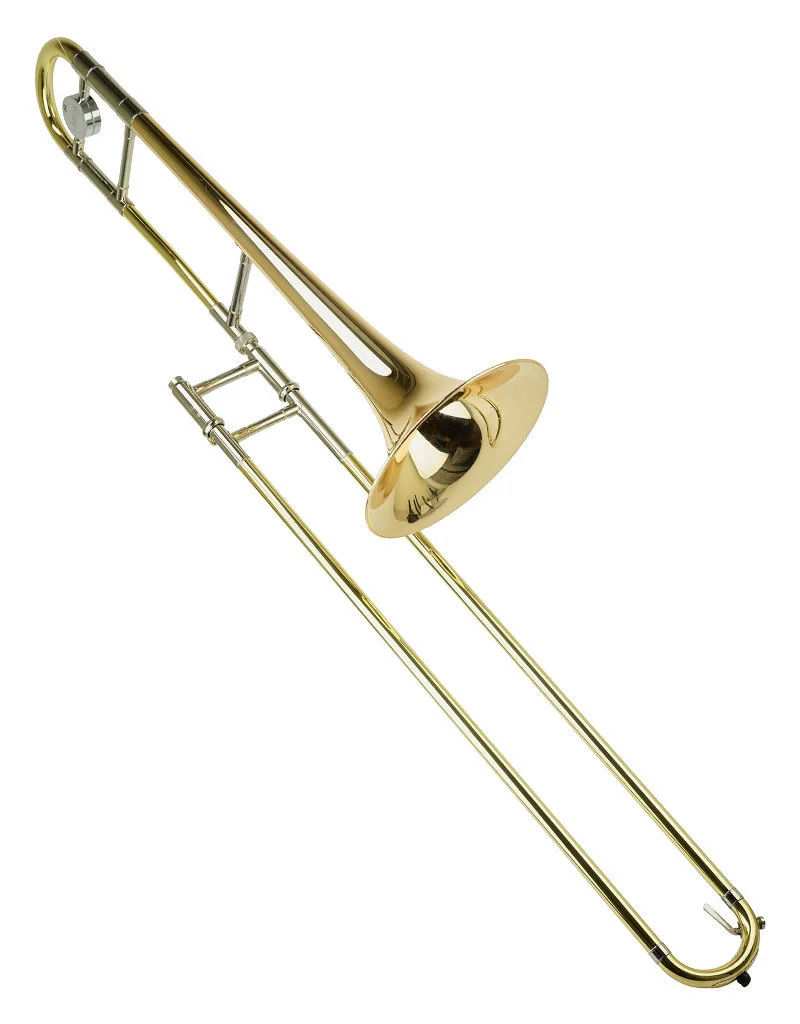 Paul was quite fond of "take 24" but recorded one more just to be on the safe side, after which he declared, "I'll listen to 'em both or I'll listen to one. Somewhere in there, there's something!" He then decided that "take 24" would be the keeper. Because of the lateness of the hour, they left off further work on the song for another day. John's suggestion of "brass band," as mentioned above, was remembered, and George Martin was given the task of putting together a score for brass, undoubtedly with Paul's input. It was documented that George had received a payment of 25 pounds for this arrangement for two trumpets and two trombones, while he also went to hiring brass instrumentalists for an upcoming session. Paul was quite fond of "take 24" but recorded one more just to be on the safe side, after which he declared, "I'll listen to 'em both or I'll listen to one. Somewhere in there, there's something!" He then decided that "take 24" would be the keeper. Because of the lateness of the hour, they left off further work on the song for another day. John's suggestion of "brass band," as mentioned above, was remembered, and George Martin was given the task of putting together a score for brass, undoubtedly with Paul's input. It was documented that George had received a payment of 25 pounds for this arrangement for two trumpets and two trombones, while he also went to hiring brass instrumentalists for an upcoming session.
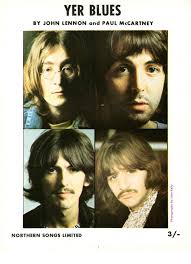 That upcoming session turned out to be on August 20th, 1968. George Harrison was not present because of a quick trip to Greece, and John and Ringo took to putting the finishing touches onto John's previously recorded track “Yer Blues” in EMI Studio Three from 5 to 5:30 pm that day. However, in EMI Studio Two, Paul oversaw a solo session at 8 pm to complete “Mother Nature's Son,” one of five songs on the “White Album” to feature only one Beatle (the others being "Wild Honey Pie," “Blackbird,” "Julia" and "Good Night"). That upcoming session turned out to be on August 20th, 1968. George Harrison was not present because of a quick trip to Greece, and John and Ringo took to putting the finishing touches onto John's previously recorded track “Yer Blues” in EMI Studio Three from 5 to 5:30 pm that day. However, in EMI Studio Two, Paul oversaw a solo session at 8 pm to complete “Mother Nature's Son,” one of five songs on the “White Album” to feature only one Beatle (the others being "Wild Honey Pie," “Blackbird,” "Julia" and "Good Night").
 The brass instruments, the musicians now unknown, were recorded onto open tracks two and three while they were hearing Paul's performance over a loudspeaker as they played along. “Paul was downstairs (on the studio floor) going through the arrangement with George (Martin) and the brass players,” engineer Ken Scott recalls. “Everything was great; everyone was in great spirits. It felt really good. Suddenly, half way through, John and Ringo walked in and you could cut the atmosphere with a knife! An instant change. It was like that for ten minutes and then as soon as they left it felt great again. It was very bizarre.” Such were the tensions in the band at the time. The brass instruments, the musicians now unknown, were recorded onto open tracks two and three while they were hearing Paul's performance over a loudspeaker as they played along. “Paul was downstairs (on the studio floor) going through the arrangement with George (Martin) and the brass players,” engineer Ken Scott recalls. “Everything was great; everyone was in great spirits. It felt really good. Suddenly, half way through, John and Ringo walked in and you could cut the atmosphere with a knife! An instant change. It was like that for ten minutes and then as soon as they left it felt great again. It was very bizarre.” Such were the tensions in the band at the time.
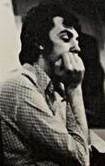 A reduction mix was then made to combine both brass instrument tracks onto track three, this becoming "take 26," opening track two for Paul to record yet more overdubs for the song. One overdub was of a bass drum for the latter half of the song, this recording being detailed by Alan Brown, technical engineer on this day: “Paul wanted an open effect on his drums (to give a bongos sound) and we ended up leaving the studio itself and putting the drums in the corridor, halfway down, with mikes at the far end. It wasn't carpeted then and it gave an interesting staccato effect.” A reduction mix was then made to combine both brass instrument tracks onto track three, this becoming "take 26," opening track two for Paul to record yet more overdubs for the song. One overdub was of a bass drum for the latter half of the song, this recording being detailed by Alan Brown, technical engineer on this day: “Paul wanted an open effect on his drums (to give a bongos sound) and we ended up leaving the studio itself and putting the drums in the corridor, halfway down, with mikes at the far end. It wasn't carpeted then and it gave an interesting staccato effect.”
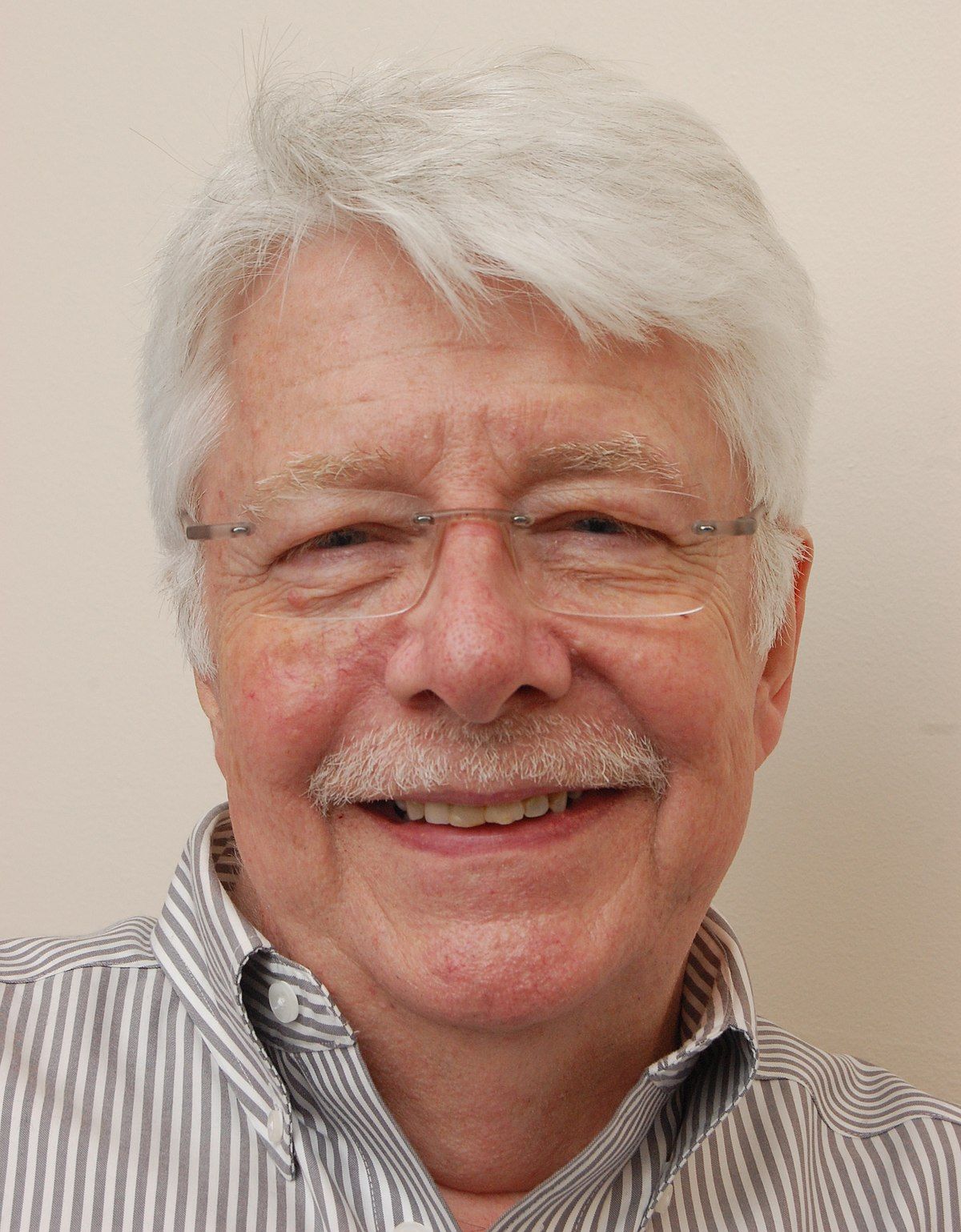 Ken Scott also remembers an experiment Paul wanted to use for recording the drums, this recollection most likely being instituted on this day. In his book "Abbey Road To Ziggy Stardust," he explained: "Paul decided that he wanted a distant sound on the drums. Right at the end of EMI there was a staircase that went from the basement all the way to the top of the building, so we set up some drums at the bottom, and I put a mic up at the same level as the control room to capture it. When Paul hit the bass drum, much to everyone's surprise it sounded like tympany, and that's what you hear on the record at 1:54...These were the kinds of things that we were always trying. Sometimes they worked and sometimes they didn't" Ken Scott also remembers an experiment Paul wanted to use for recording the drums, this recollection most likely being instituted on this day. In his book "Abbey Road To Ziggy Stardust," he explained: "Paul decided that he wanted a distant sound on the drums. Right at the end of EMI there was a staircase that went from the basement all the way to the top of the building, so we set up some drums at the bottom, and I put a mic up at the same level as the control room to capture it. When Paul hit the bass drum, much to everyone's surprise it sounded like tympany, and that's what you hear on the record at 1:54...These were the kinds of things that we were always trying. Sometimes they worked and sometimes they didn't"
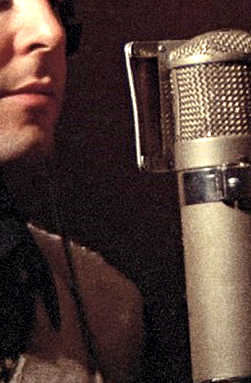 Other overdubs Paul recorded onto this open track include a double-tracking of some of his vocals and a second acoustic guitar track to accentuate certain portions of the original recording. It was possibly sometime during these overdubs that engineer Alan Brown remembers: “It was quite late at night, the whole building was quiet, and there was Paul playing this enchanting song. I love the phrase 'sitting in my field of grass (sic).' It has a completeness about it. It isn't just any old field, it's a field of grass. We were all moved by it. Simultaneous to this recording session, Russia was invading Czechoslovakia. Of course we didn't know it at that moment but it did seem such a contrast of events." Other overdubs Paul recorded onto this open track include a double-tracking of some of his vocals and a second acoustic guitar track to accentuate certain portions of the original recording. It was possibly sometime during these overdubs that engineer Alan Brown remembers: “It was quite late at night, the whole building was quiet, and there was Paul playing this enchanting song. I love the phrase 'sitting in my field of grass (sic).' It has a completeness about it. It isn't just any old field, it's a field of grass. We were all moved by it. Simultaneous to this recording session, Russia was invading Czechoslovakia. Of course we didn't know it at that moment but it did seem such a contrast of events."
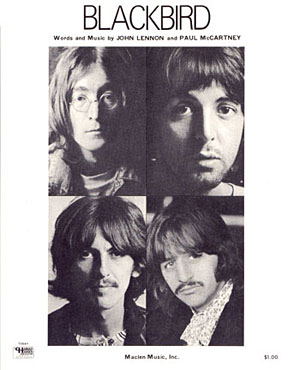 Another unusual overdub on this day was a percussive element Paul stumbled upon while reviewing the song in the control room. He was tapping out a rhythm to the song on a book and then, since he liked the percussive sound so much, he requested engineer Ken Scott to record him doing this onto the tape. Ken positioned a microphone over the book at Paul's insistence and, as he joked in the "Track By Track" section of the "White Album" 50th Anniversay book, "They never taught you how to get the best sound out of a book at EMI, but I carefully miked it as best I could." The sound produced is quite similar to the foot-tapping heard on Paul's other "White Album" acoustic number "Blackbird.” Another unusual overdub on this day was a percussive element Paul stumbled upon while reviewing the song in the control room. He was tapping out a rhythm to the song on a book and then, since he liked the percussive sound so much, he requested engineer Ken Scott to record him doing this onto the tape. Ken positioned a microphone over the book at Paul's insistence and, as he joked in the "Track By Track" section of the "White Album" 50th Anniversay book, "They never taught you how to get the best sound out of a book at EMI, but I carefully miked it as best I could." The sound produced is quite similar to the foot-tapping heard on Paul's other "White Album" acoustic number "Blackbird.”
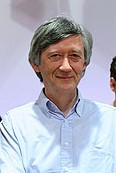 After these overdubs were recorded by Paul, which extended the session into the early hours of the next morning, eight attempts at a mono mix of “Mother Nature's Son” were made, although this was improved upon at a later date. With his juices flowing, however, Paul decided to record two more songs. The first was a simple acoustic guitar and vocal song documented simply as "Demo," although it has come to be known as “Etcetera.” Only one take of this song was recorded, this being taken away by Paul at the end of the day and never seen nor heard of again. "This was a very beautiful song," engineer Alan Brown remembers. "I recall it was a ballad and had the word "etcetera' several times in the lyric. I only heard it twice: when he recorded it and when we played it back to him. The tape was taken away and I've never heard of it since." This was followed by a semi-experimental track called “Wild Honey Pie” which was overdubbed upon and mixed on this day, the song actually appearing on the finished “White Album” three months later. Finally, at 4 am, the session was complete. After these overdubs were recorded by Paul, which extended the session into the early hours of the next morning, eight attempts at a mono mix of “Mother Nature's Son” were made, although this was improved upon at a later date. With his juices flowing, however, Paul decided to record two more songs. The first was a simple acoustic guitar and vocal song documented simply as "Demo," although it has come to be known as “Etcetera.” Only one take of this song was recorded, this being taken away by Paul at the end of the day and never seen nor heard of again. "This was a very beautiful song," engineer Alan Brown remembers. "I recall it was a ballad and had the word "etcetera' several times in the lyric. I only heard it twice: when he recorded it and when we played it back to him. The tape was taken away and I've never heard of it since." This was followed by a semi-experimental track called “Wild Honey Pie” which was overdubbed upon and mixed on this day, the song actually appearing on the finished “White Album” three months later. Finally, at 4 am, the session was complete.
On August 23rd, 1968, four sets of tape copies were made of five recently recorded tracks, "Mother Nature's Son" being one of them. All of these were signed for and taken away by Mal Evans, no doubt to be given to each Beatle for review.
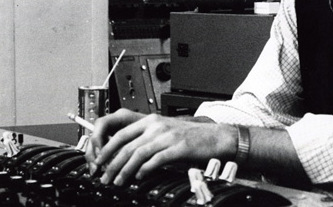 Both the stereo and mono mixes of “Mother Nature's Son” were made on October 12th, 1968 in the control room of EMI Studio Two by producer George Martin and engineers Ken Scott and John Smith. It appears that The Beatles were present and influential in creating these mixes, as Ken Scott recalls: “The Beatles would go to extremes with the 'White Album.' Like when it came to mixing they would say, 'Right, let's add full top (treble) and full bass to everything.' Some of the time it would sound good, sometimes it wouldn't. When it did they would say, 'OK, let's do it like that.' Most people just used top and bass where necessary, trying to keep the sound as natural as possible. The Beatles weren't necessarily after a natural sound." Both the stereo and mono mixes of “Mother Nature's Son” were made on October 12th, 1968 in the control room of EMI Studio Two by producer George Martin and engineers Ken Scott and John Smith. It appears that The Beatles were present and influential in creating these mixes, as Ken Scott recalls: “The Beatles would go to extremes with the 'White Album.' Like when it came to mixing they would say, 'Right, let's add full top (treble) and full bass to everything.' Some of the time it would sound good, sometimes it wouldn't. When it did they would say, 'OK, let's do it like that.' Most people just used top and bass where necessary, trying to keep the sound as natural as possible. The Beatles weren't necessarily after a natural sound."
 In 2018, George Martin's son Giles Martin, along with engineer Sam Okell, returned to the master tapes of "Mother Nature's Son" to create an excellent new stereo mix for inclusion on the various editions of the "White Album" for its 50th Anniversary. They also created a stereo mix of the demo that Paul made in May of 1968 at George Harrison's "Kinfauns" home in Esher, as well as an interesting mix of "take 15" as recorded in EMI Studio Two on August 9th, 1968. In 2018, George Martin's son Giles Martin, along with engineer Sam Okell, returned to the master tapes of "Mother Nature's Son" to create an excellent new stereo mix for inclusion on the various editions of the "White Album" for its 50th Anniversary. They also created a stereo mix of the demo that Paul made in May of 1968 at George Harrison's "Kinfauns" home in Esher, as well as an interesting mix of "take 15" as recorded in EMI Studio Two on August 9th, 1968.
 Sometime in 1993, Paul recorded a new version of “Mother Nature's Son” as a soundcheck during his “New World Tour” of that year. The results, which feature Paul on guitar and Paul “Wix” Wickens on keyboards, ended up being broadcast on his June 19th, 1995 radio show “Oobu Joobu” as well as on a limited edition CD release entitled “Oobu Joobu Ecology.” Sometime in 1993, Paul recorded a new version of “Mother Nature's Son” as a soundcheck during his “New World Tour” of that year. The results, which feature Paul on guitar and Paul “Wix” Wickens on keyboards, ended up being broadcast on his June 19th, 1995 radio show “Oobu Joobu” as well as on a limited edition CD release entitled “Oobu Joobu Ecology.”
Also, sometime between April 1st and May 18th, 2002, a live rendition of the song was made by Paul and his band, this appearing on both the albums “Back In The US” and “Back In The World.”
Song Structure and Style
"The structure is quite straighforward, consisting of 'verse/ verse/ refrain/ verse/ refrain/ verse' (or aababa) with a simple introduction thrown in. What's unique here is the refrain which surpringly has no lyrics whatsoever other than "doo, doo, doo" sung to a distinctive melody line.
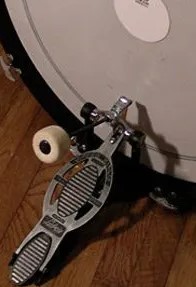 The introduction actually consists of two parts, the first being a somewhat nondescript slowly played acoustic guitar piece of no fixed meter, one that Paul developed in the studio on the day of recording. There are seven single guitar notes plucked in succession followed by an awkward sounding thumping on the bass drum as an overdub. The second part begins the 4/4 meter, four measures in length, consisting of only Paul on acoustic guitar playing the finger picking style heard throughout most of the song and his subtle foot tapping to keep the beat. The introduction actually consists of two parts, the first being a somewhat nondescript slowly played acoustic guitar piece of no fixed meter, one that Paul developed in the studio on the day of recording. There are seven single guitar notes plucked in succession followed by an awkward sounding thumping on the bass drum as an overdub. The second part begins the 4/4 meter, four measures in length, consisting of only Paul on acoustic guitar playing the finger picking style heard throughout most of the song and his subtle foot tapping to keep the beat.
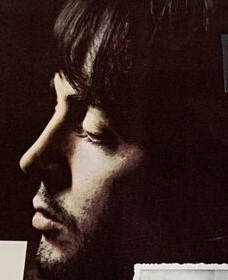 The first verse then begins, which is ten measures in length, the first eight measures consisting entirely of Paul playing his acoustic guitar, adding book tapping and vocals. A single note of brass playing is heard stretching throughout measures nine and ten as Paul repeats his finger picking style from measures seven and eight. The first verse then begins, which is ten measures in length, the first eight measures consisting entirely of Paul playing his acoustic guitar, adding book tapping and vocals. A single note of brass playing is heard stretching throughout measures nine and ten as Paul repeats his finger picking style from measures seven and eight.
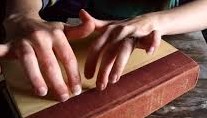 Verse two is only eight measures long this time while adding various elements, such as a delicate brass arrangement throughout and, in measures five through eight, Paul's overdubbed book tapping playing eighth-note beats. Also noteworthy is Paul interrupting his finger picking style in the fourth measure to play an impressive ascending guitar run, this mimicked by the brass. Verse two is only eight measures long this time while adding various elements, such as a delicate brass arrangement throughout and, in measures five through eight, Paul's overdubbed book tapping playing eighth-note beats. Also noteworthy is Paul interrupting his finger picking style in the fourth measure to play an impressive ascending guitar run, this mimicked by the brass.
 This is followed by the first eight measure refrain which is also entirely in 4/4 time except for measure four which is in 2/4 time. In addition to Paul's guitar work and “doo, doo, doo” singing, he continues the book tapping but adds bass drum beats in quarter-note rhythm for the first four measures and then a half-note rhythm for the final four measures. The brass accentuates Paul's melody line nicely, harmonizing with it most of the way. This is followed by the first eight measure refrain which is also entirely in 4/4 time except for measure four which is in 2/4 time. In addition to Paul's guitar work and “doo, doo, doo” singing, he continues the book tapping but adds bass drum beats in quarter-note rhythm for the first four measures and then a half-note rhythm for the final four measures. The brass accentuates Paul's melody line nicely, harmonizing with it most of the way.
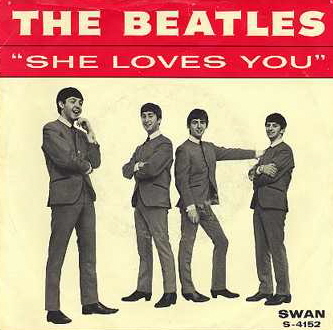 Verse three is next which, except for different lyrics, is a virtual repeat of verse two minus the book tapping. A repeat of the refrain then appears, the only difference here is an interesting counter-melody played by the brass section and some rhythmic differences in Paul's percussive work, especially in the final three measures. Paul also adds the vocalization “yeah, yeah, yeah” at the end of measure six, just to add a little “She Loves You” throwback for those who may notice. Verse three is next which, except for different lyrics, is a virtual repeat of verse two minus the book tapping. A repeat of the refrain then appears, the only difference here is an interesting counter-melody played by the brass section and some rhythmic differences in Paul's percussive work, especially in the final three measures. Paul also adds the vocalization “yeah, yeah, yeah” at the end of measure six, just to add a little “She Loves You” throwback for those who may notice.
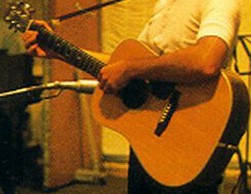 One final ten-measure verse is thrown in to complete the song, the first eight measures stripping away all brass and percussive overdubs to reveal only Paul's acoustic guitar along with him humming and “ooh”ing the melody line. One overdub is heard here though, this being an additional acoustic guitar that adds some tasty and complimentary fills. Paul's ascending guitar run of the second and third verse is heard here also, this time being thickened by Paul double-tracking it with the overdubbed guitar. The final two measures bring the brass section back in for a simple ending arrangement with a final “blue-note” to add an unexpected anticipatory chord to hang in the air while Paul repeats the song's title for the last time. One final ten-measure verse is thrown in to complete the song, the first eight measures stripping away all brass and percussive overdubs to reveal only Paul's acoustic guitar along with him humming and “ooh”ing the melody line. One overdub is heard here though, this being an additional acoustic guitar that adds some tasty and complimentary fills. Paul's ascending guitar run of the second and third verse is heard here also, this time being thickened by Paul double-tracking it with the overdubbed guitar. The final two measures bring the brass section back in for a simple ending arrangement with a final “blue-note” to add an unexpected anticipatory chord to hang in the air while Paul repeats the song's title for the last time.
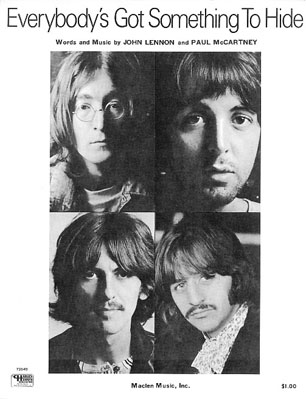 The song appears to have been somewhat difficult for Paul to play, some near misses and fret buzzing heard even in the finished master. Nonetheless, the imperfect but relaxing effect of the song is more than suitable, the intended feel of the song achieved nicely for the listener to close his eyes and enjoy. George Martin's brass arrangement is just busy enough to be impressive without smothering the delicate nature of the piece. While Ringo probably could have put in an appropriate performance to fit the song's mood (undoubtedly better than Paul's percussive work here), John and George aren't necessarily missed. The fractured comradery of The Beatles at this time was disguised nicely by Paul on this track, his masterful display on vocals and guitar propelling the album nicely as a segue for John's rousing next track, “Everybody's Got Something To Hide Except Me And My Monkey.” The song appears to have been somewhat difficult for Paul to play, some near misses and fret buzzing heard even in the finished master. Nonetheless, the imperfect but relaxing effect of the song is more than suitable, the intended feel of the song achieved nicely for the listener to close his eyes and enjoy. George Martin's brass arrangement is just busy enough to be impressive without smothering the delicate nature of the piece. While Ringo probably could have put in an appropriate performance to fit the song's mood (undoubtedly better than Paul's percussive work here), John and George aren't necessarily missed. The fractured comradery of The Beatles at this time was disguised nicely by Paul on this track, his masterful display on vocals and guitar propelling the album nicely as a segue for John's rousing next track, “Everybody's Got Something To Hide Except Me And My Monkey.”
American Releases
November 25th, 1968 was the date of the US release for the album "The Beatles," aka the "White Album," which featured "Mother Nature's Son" as the third track on side three, interjecting a mellow contemplative song within a somewhat "hard rock" side of this divergent album. It was released on compact disc for the first time on August 24th, 1987, then as a 30th Anniversary release on November 23rd, 1998, and finally as a remastered release on November 9th, 2009. It was finally released as a mono vinyl double-album in America on September 9th, 2014, while a vibrant new stereo mix was released on vinyl on November 9th, 2018.
.jpg) Sometime in 1969, Capitol released a “Playtape” entitled “Beatles Vol. VI” which contained "Mother Nature's Son" and three other songs from the “White Album.” This format which was popular in the '60s was manufactured for use in portable players and as standard equipment in Volkswagen models at the time. These tapes are highly collectible today. Sometime in 1969, Capitol released a “Playtape” entitled “Beatles Vol. VI” which contained "Mother Nature's Son" and three other songs from the “White Album.” This format which was popular in the '60s was manufactured for use in portable players and as standard equipment in Volkswagen models at the time. These tapes are highly collectible today.
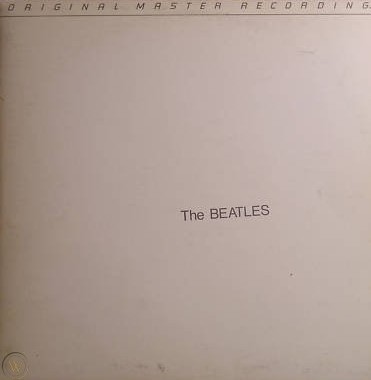 An interesting US vinyl edition of the “White Album” was released on January 7th, 1982, this being manufactured by Mobile Fidelity Sound Lab in Chatsworth, California as part of their "Original Master Recording" series. Their practice was to prepare a new master utilizing half-speed mastering technology from the original master tapes, in this case using the leased sub-master from Capitol Records. This release, which sounded superior to to all previous British and American pressings, was packaged in a non-embossed unnumbered cover that did not include the usual poster/lyric sheet or individual Beatles portraits as contained in standard releases. This nonetheless excellent edition of the album was only available for a short time and is quite collectible today. An interesting US vinyl edition of the “White Album” was released on January 7th, 1982, this being manufactured by Mobile Fidelity Sound Lab in Chatsworth, California as part of their "Original Master Recording" series. Their practice was to prepare a new master utilizing half-speed mastering technology from the original master tapes, in this case using the leased sub-master from Capitol Records. This release, which sounded superior to to all previous British and American pressings, was packaged in a non-embossed unnumbered cover that did not include the usual poster/lyric sheet or individual Beatles portraits as contained in standard releases. This nonetheless excellent edition of the album was only available for a short time and is quite collectible today.
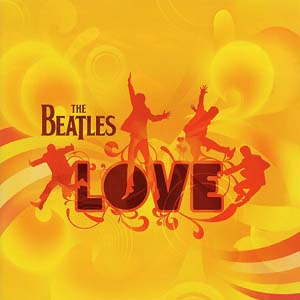 "Take two" from the original master tape as recorded on August 9th, 1968 was released on the compilation album “Anthology 3” on October 28th, 1996. Beatles fans got to experience what the actual session for the song sounded like before Paul was satisfied with "take 24" as overdubbed on and released on the official “White Album.” "Take two" from the original master tape as recorded on August 9th, 1968 was released on the compilation album “Anthology 3” on October 28th, 1996. Beatles fans got to experience what the actual session for the song sounded like before Paul was satisfied with "take 24" as overdubbed on and released on the official “White Album.”
A bonus track for the iTunes release of the album “Love,” the track “The Fool On The Hill,” was released in 2011 and featured elements of “Mother Nature's Son,” namely some vocals and brass.
 On September 9th, 2009, the CD box set “The Beatles In Mono” was released which featured the entire “White Album” including the mono version of “Mother Nature's Son” for the first time in the US. Also released on September 9th, 2009, in promotion of the remastered Beatles catalog, the "09.09.09 Sampler" was distributed to retailers and radio programmers, "Mother Nature's Son" being featured therein. The vinyl edition of this box set was first released on September 9th, 2014. On September 9th, 2009, the CD box set “The Beatles In Mono” was released which featured the entire “White Album” including the mono version of “Mother Nature's Son” for the first time in the US. Also released on September 9th, 2009, in promotion of the remastered Beatles catalog, the "09.09.09 Sampler" was distributed to retailers and radio programmers, "Mother Nature's Son" being featured therein. The vinyl edition of this box set was first released on September 9th, 2014.
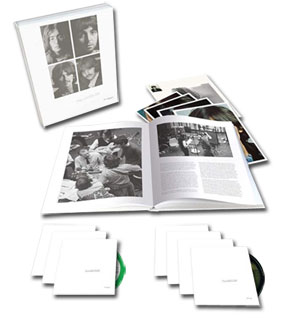 Various editions of the "White Album" were released on November 9th, 2018 to commemorate the 50th Anniversary of its original release. The "Deluxe" edition, which was made available in a 3CD set and a limited edition 180-gram 4LP vinyl set, contained the newly created Giles Martin mix of the "White Album" as well as the complete set of Esher demos that The Beatles recorded in late May of 1968. The "Super Deluxe" 6CD + 1Blu-ray edition also contains the original "take 15" of the rhythm track as recorded on August 9th, 1968. Various editions of the "White Album" were released on November 9th, 2018 to commemorate the 50th Anniversary of its original release. The "Deluxe" edition, which was made available in a 3CD set and a limited edition 180-gram 4LP vinyl set, contained the newly created Giles Martin mix of the "White Album" as well as the complete set of Esher demos that The Beatles recorded in late May of 1968. The "Super Deluxe" 6CD + 1Blu-ray edition also contains the original "take 15" of the rhythm track as recorded on August 9th, 1968.
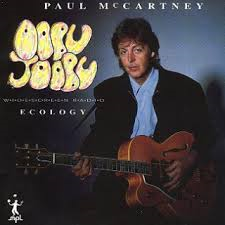 On May 5th, 1997, a CD entitled “Oobu Joobu Ecology” was made available as a bonus disc at Best Buy stores in the US whenever copies of Paul's new “Flaming Pie” release was purchased. This disc contained the soundcheck of “Mother Nature's Son” as recorded during Paul's 1993 tour as mentioned above. On May 5th, 1997, a CD entitled “Oobu Joobu Ecology” was made available as a bonus disc at Best Buy stores in the US whenever copies of Paul's new “Flaming Pie” release was purchased. This disc contained the soundcheck of “Mother Nature's Son” as recorded during Paul's 1993 tour as mentioned above.
On November 11th, 2002, Paul's live album “Back In The US” included the song “Mother Nature's Son,” this being recorded sometime between April 1st and May 18th of that year.
Live Performances
The Beatles, of course, never performed "Mother Nature's Son" live, but Paul did. Other than playing the song during soundchecks for his 1993 “New World Tour” (as included on the above mentioned “Oobu Joobu Ecology” album), Paul included it during the first leg of his 2002 “Driving USA” tour, which ran from April 1st (Oakland, California) to May 18th (Sunrise, Florida).
Conclusion
 It has been testified to from multiple sources that during the making of the "White Album," The Beatles were disintegrating as a band. From listening to many songs written by Paul during these sessions, it appears that he, if only subconsciously, was then preparing for the inevitable eventuality of The Beatles no longer being a cohesive unit, thus becoming more and more comfortable working as a solo artist. It has been testified to from multiple sources that during the making of the "White Album," The Beatles were disintegrating as a band. From listening to many songs written by Paul during these sessions, it appears that he, if only subconsciously, was then preparing for the inevitable eventuality of The Beatles no longer being a cohesive unit, thus becoming more and more comfortable working as a solo artist.
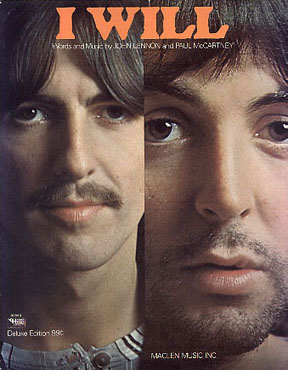 As mentioned above, three Paul songs on this album were recorded without any of the other Beatles' involvement at all, while some others featured either only one other Beatle (“Why Don't We Do It In The Road”) or featuring only inconsequential participation that could probably have been performed by anyone (“I Will”). The end result was that Paul appeared to be the most prepared to work without the others when that time did come. As mentioned above, three Paul songs on this album were recorded without any of the other Beatles' involvement at all, while some others featured either only one other Beatle (“Why Don't We Do It In The Road”) or featuring only inconsequential participation that could probably have been performed by anyone (“I Will”). The end result was that Paul appeared to be the most prepared to work without the others when that time did come.
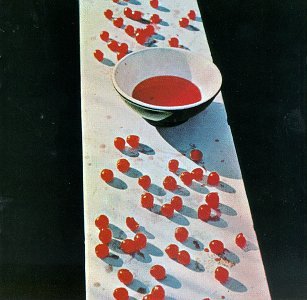 And when that time did arrive, his first solo album “McCartney” was recorded fully on his own with only some vocal harmonies from his wife Linda at times. Not to say that the other three band members were ill equipped to have successful solo careers, because each did. However, right out of the gate, it was quite natural for Paul to work alone because he was already familiar with doing it. “Mother Nature's Son” is clear evidence of this. And when that time did arrive, his first solo album “McCartney” was recorded fully on his own with only some vocal harmonies from his wife Linda at times. Not to say that the other three band members were ill equipped to have successful solo careers, because each did. However, right out of the gate, it was quite natural for Paul to work alone because he was already familiar with doing it. “Mother Nature's Son” is clear evidence of this.
Song Summary
“Mother Nature's Son”
Written by: John Lennon / Paul McCartney
- Song Written: February – May, 1968
- Song Recorded: August 9 and 20, 1968
- First US Release Date: November 25, 1968
- First US Album Release: Apple #SWBO-101 “The Beatles”
- US Single Release: n/a
- Highest Chart Position: n/a
- British Album Release: Apple #PCS 7067-7068 “The Beatles”
- Length: 2:48
- Key: D major
- Producer: George Martin
- Engineers: Ken Scott, John Smith
Instrumentation (most likely):
- Paul McCartney - Lead Vocals, Acoustic Guitar (1967 Martin D-28), Drums (1964 Ludwig Super Classic Black Oyster Pearl), book (title unknown)
- Unknown - Trumpet
- Unknown - Trumpet
- Unknown - Trombone
- Unknown - Trombone
Written and compiled by Dave Rybaczewski
|
IF YOU WOULD LIKE TO MAKE A DONATION TO KEEP THIS WEBSITE UP AND RUNNING, PLEASE CLICK BELOW!
Sign Up Below for our MONTHLY BEATLES TRIVIA QUIZ!
|